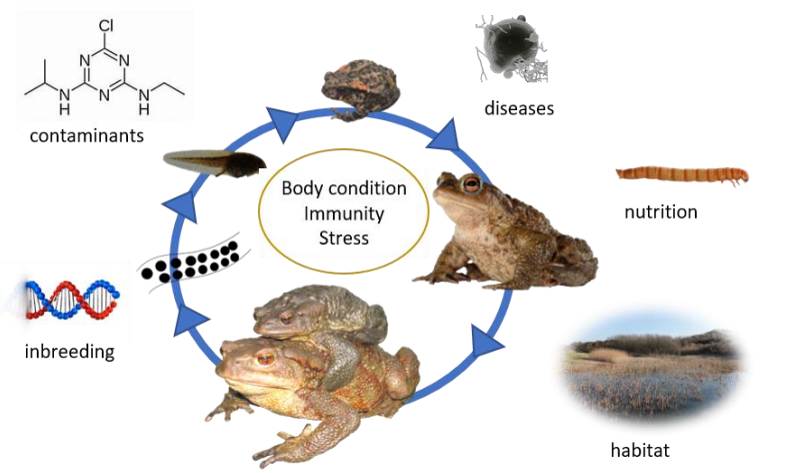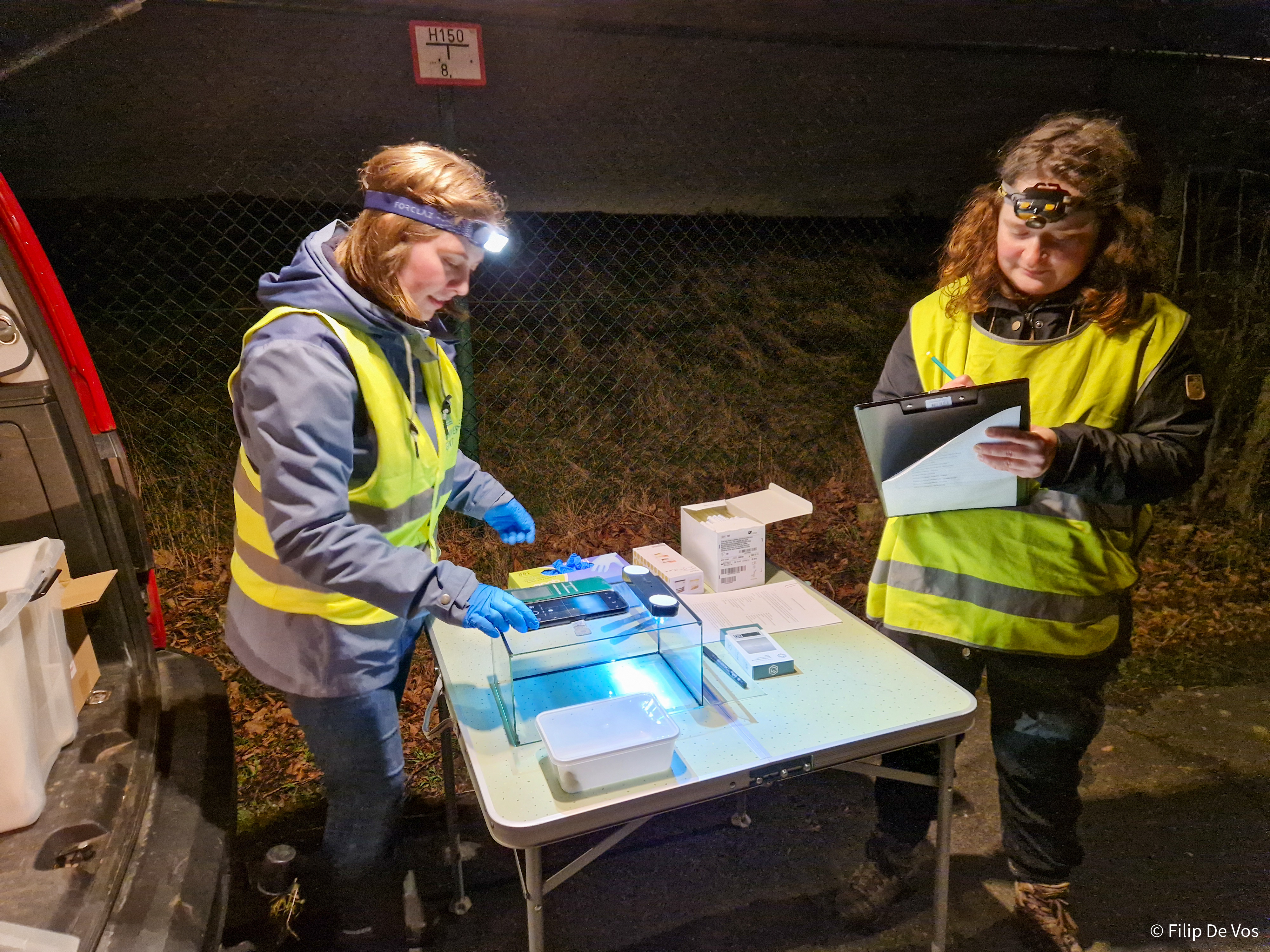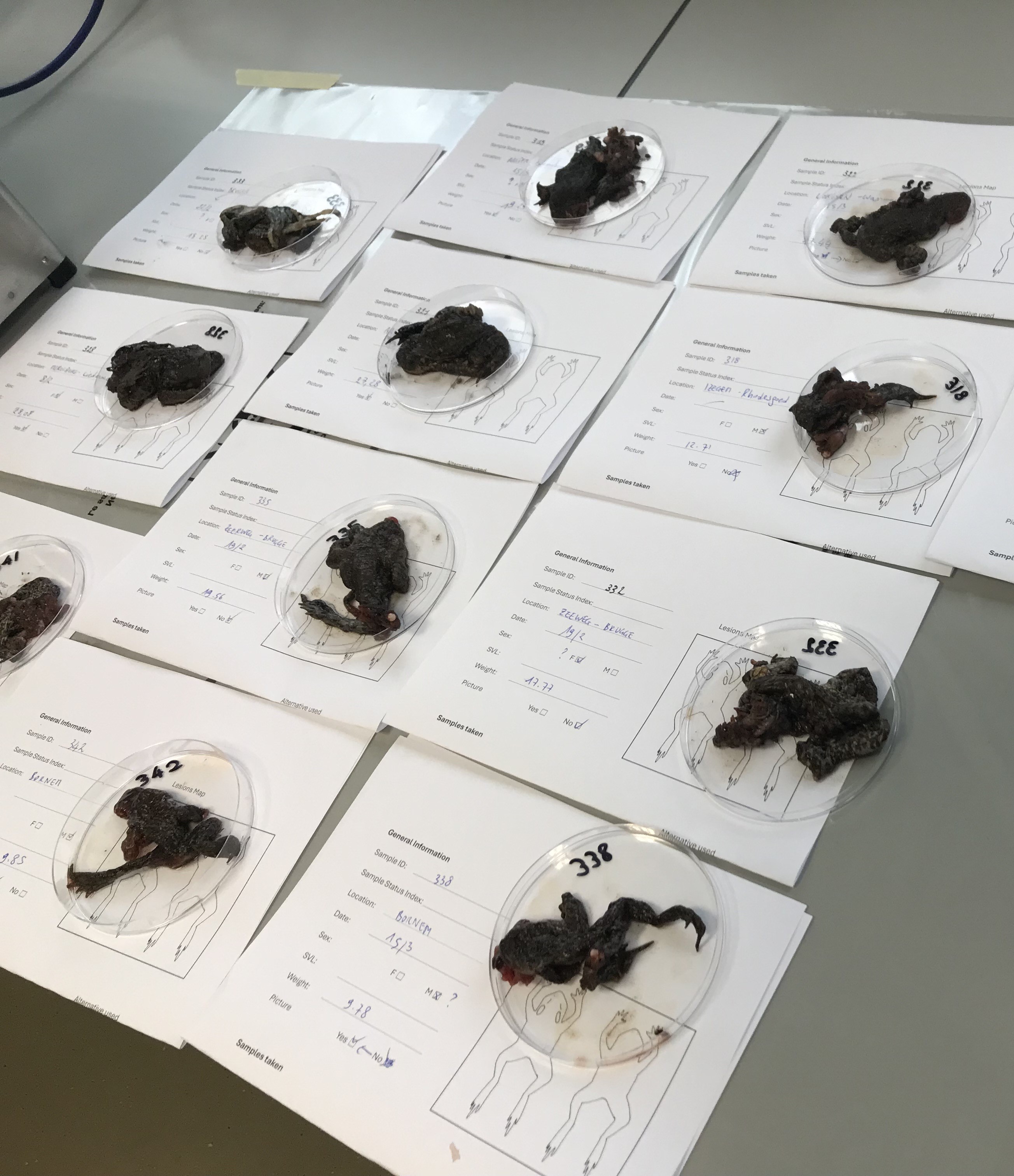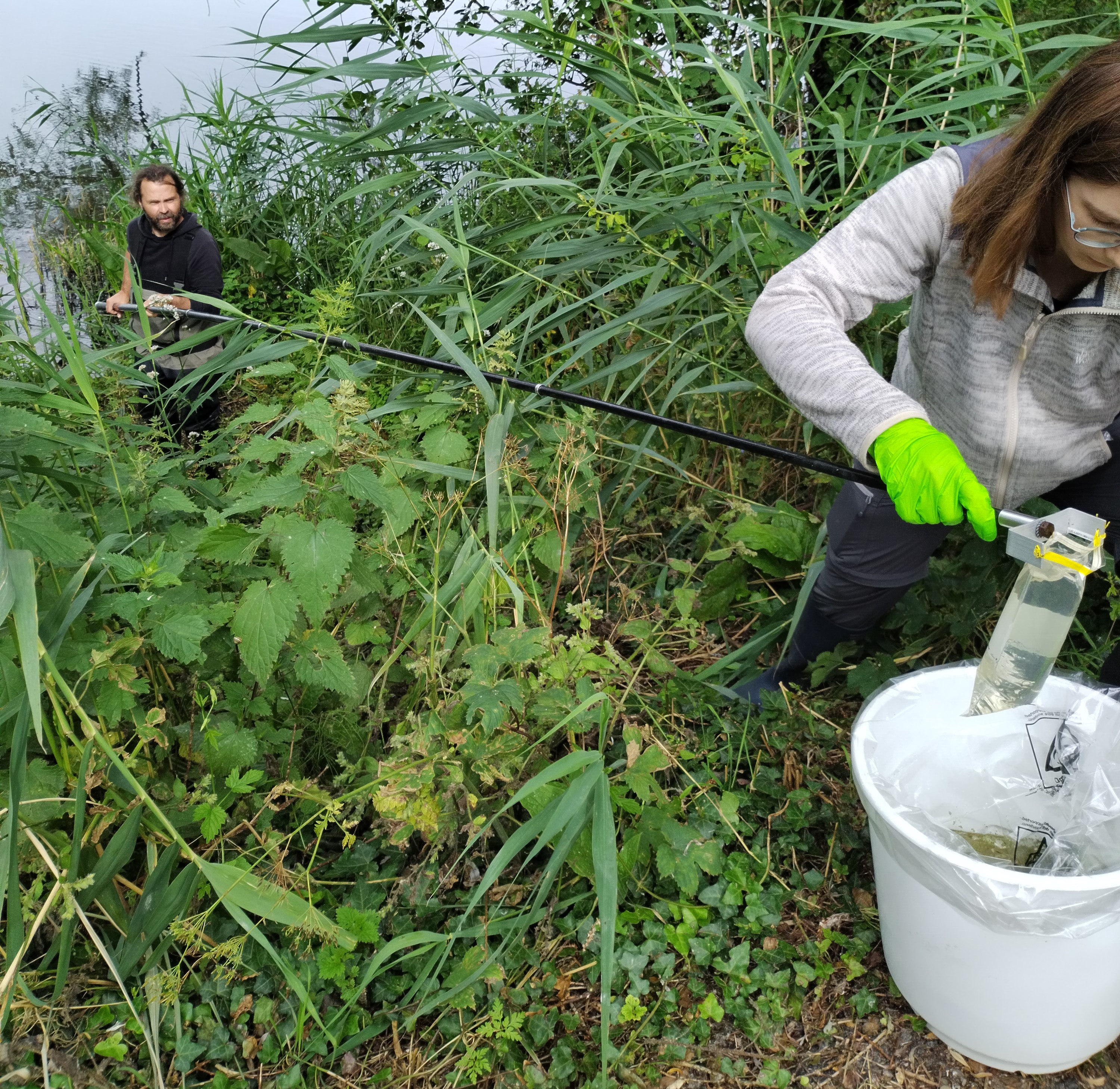Overarching Study into the Survival Of BUFO bufo
Linking pathology with ecology to preserve commonness of a declining emblematic species, the common toad (Bufo bufo)
Human influences on nature are the most important factor behind the current decline in biodiversity, forming the foundation of the ongoing sixth mass extinction event. It also includes the decline of widespread and thus common species. Small proportional reductions in populations of (to date) common species already have a large impact on ecosystem functioning and biomass.
Amphibians are more threatened than many other animals in the sixth mass extinction. The European common toad (Bufo bufo) occupies a variety of habitats. While its situation was still assessed as stable in 2008 by IUCN, the species has undergone recent, widespread declines in abundance. Multiple European countries (UK, Italy, Switzerland and the Netherlands) reported drastic declines in population sizes of 50% or more.

Understanding the causes of toad decline is key in designing measures to avert further biodiversity loss. Such enigmatic declines are probably driven by a complex interplay between multiple stressors: land use (e.g., agricultural cultivation practices, pesticide use), habitat (e.g., loss of ponds and small landscape elements) and connectivity loss (including migratory connectivity between breeding ponds and terrestrial habitats), climate change, loss of genetic diversity and disease.
To initiate the investigation into the causes behind toad declines, it is necessary to conduct a comprehensive analysis of the population trends. Sufficiently long time series are needed to estimate the long-term trends in population size and to assess whether the populations are decreasing, increasing or stable. During spring, toads undertake a widespread migration, which has been recorded by the v.z.w. Natuurpunt Studie in Flanders since 1981 (toad patrols).
News:
New Article: EARLIER TOAD MIGRATION BECAUSE OF WARMER TEMPERATURE
Many species use temperature to time important life events. These activities are often sensitive for climate change,
causing them to occur sooner or later compared to years ago. For amphibians such as frogs and toads, the toad migration
between their winterhabitat and their breeding pond is essential for the reproduction and survival. If climate change
alters the timing of these migrations, this can have an important impact on populations.
In Flanders (Belgium), we found a shift of earlier toad migration of 3.1 days per decade. This shift is consistent in
all toad populations in Flanders. In particular, warmer years are associated with earlier migration. This suggests
that climate change is a major driver of this shift.
This change in timing of toad migration can have important consequences on toad populations. For example, these animals
can become active before there prey are active. This can lead to changes in food relations. In addition, there is also
increased temperature instability (early spring periods, alternating with sudden frost events), which can result in
frozen adult toad and eggstrings.
These findings emphasize the importance of studying the timing of toad migration. It can provide insight into the
mechanisms underlying population declines.
Read more...
Fieldwork season
During toad patrols, we measured the length and weight of 525 toads. These measurements should provide us insights
whether populations in decline are characterized by a general individual loss of condition or fitness. We collected data at 10 locations with
stable toad populations and 10 locations where populations are declining. In addition, volunteers from Natuurpunt also collected dead toads at many of these places.
In total we collected 415 dead toads. Various samples are collected from these dead toads: femur, liver, stomach, feces,
mouth swab and skin. With these samples we learn more about the age of the toads, the food, the genetic diversity of the populations,
their exposure to pesticides, heavy metals, fungal toxins present on agricultural crops and pharmaceuticals used in farm animals, and
possible diseases and the stress that the animals experience.


We also characterized the ponds within the 10 stable and declining populations. Between April and June
the temperature, pH, salinity, turbidity, depth and oxygen in the pond were measured. We are currently determining the presence of
pesticides, heavy metals, mold toxins and pharmaceuticals. In addition, we also took eDNA samples (DNA present in the water),
so that we can map the fish and amphibian community per pond.

We are currently determining the vegetation composition in and around all these pools, processing the collected data and
we enjoy some well-deserved rest after an intensive field campaign.
New Article: EARLIER TOAD MIGRATION BECAUSE OF WARMER TEMPERATURE
Many species use temperature to time important life events. These activities are often sensitive for climate change,
causing them to occur sooner or later compared to years ago. For amphibians such as frogs and toads, the toad migration
between their winterhabitat and their breeding pond is essential for the reproduction and survival. If climate change
alters the timing of these migrations, this can have an important impact on populations.
In Flanders (Belgium), we found a shift of earlier toad migration of 3.1 days per decade. This shift is consistent in
all toad populations in Flanders. In particular, warmer years are associated with earlier migration. This suggests
that climate change is a major driver of this shift.
This change in timing of toad migration can have important consequences on toad populations. For example, these animals
can become active before there prey are active. This can lead to changes in food relations. In addition, there is also
increased temperature instability (early spring periods, alternating with sudden frost events), which can result in
frozen adult toad and eggstrings.
These findings emphasize the importance of studying the timing of toad migration. It can provide insight into the
mechanisms underlying population declines.
Read more...
Fieldwork season
During toad patrols, we measured the length and weight of 525 toads. These measurements should provide us insights whether populations in decline are characterized by a general individual loss of condition or fitness. We collected data at 10 locations with stable toad populations and 10 locations where populations are declining. In addition, volunteers from Natuurpunt also collected dead toads at many of these places. In total we collected 415 dead toads. Various samples are collected from these dead toads: femur, liver, stomach, feces, mouth swab and skin. With these samples we learn more about the age of the toads, the food, the genetic diversity of the populations, their exposure to pesticides, heavy metals, fungal toxins present on agricultural crops and pharmaceuticals used in farm animals, and possible diseases and the stress that the animals experience.


We also characterized the ponds within the 10 stable and declining populations. Between April and June the temperature, pH, salinity, turbidity, depth and oxygen in the pond were measured. We are currently determining the presence of pesticides, heavy metals, mold toxins and pharmaceuticals. In addition, we also took eDNA samples (DNA present in the water), so that we can map the fish and amphibian community per pond.

We are currently determining the vegetation composition in and around all these pools, processing the collected data and we enjoy some well-deserved rest after an intensive field campaign.



